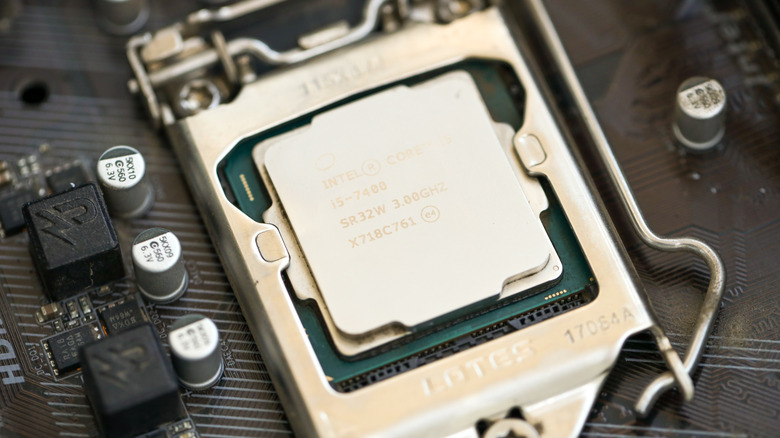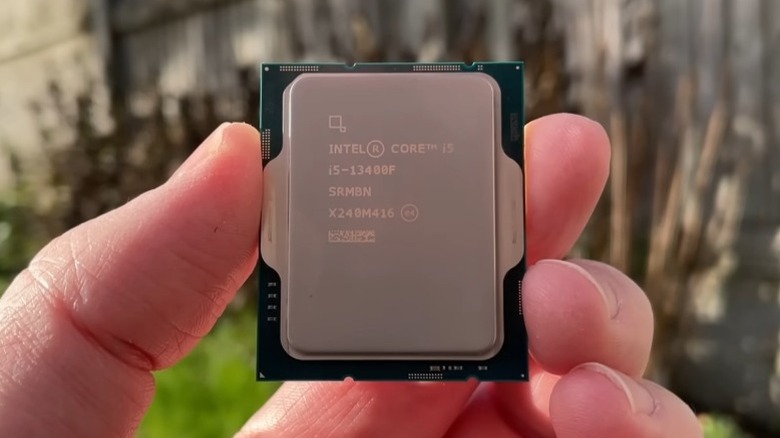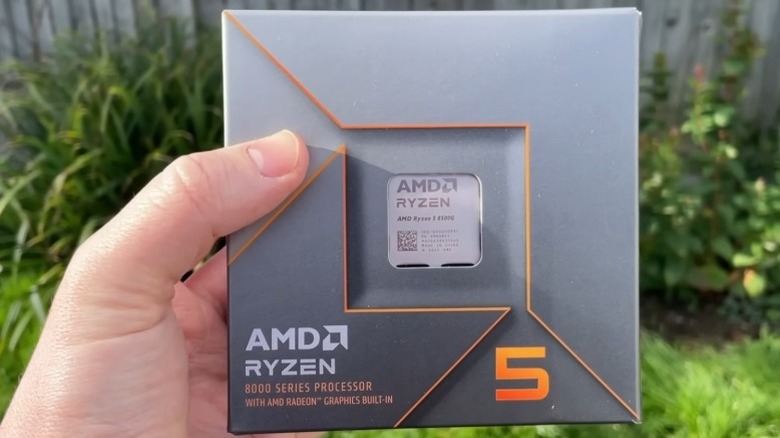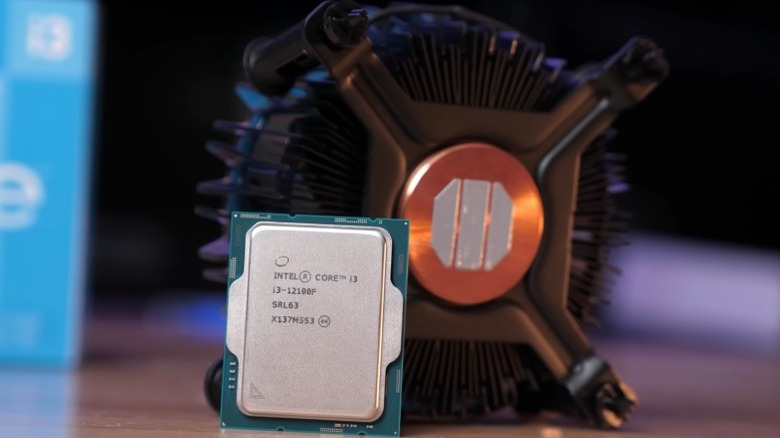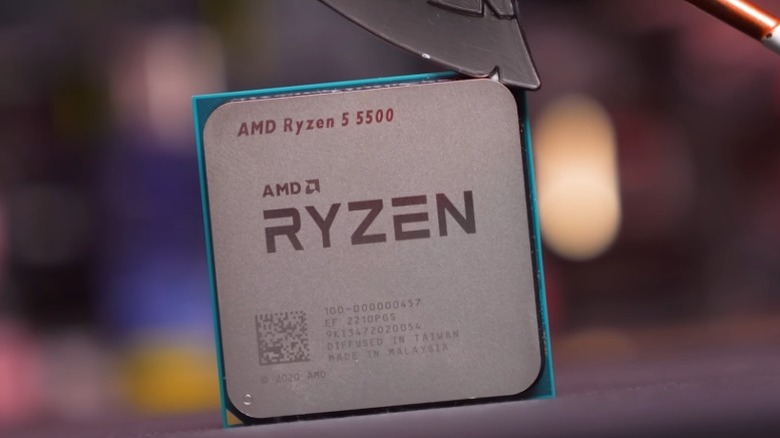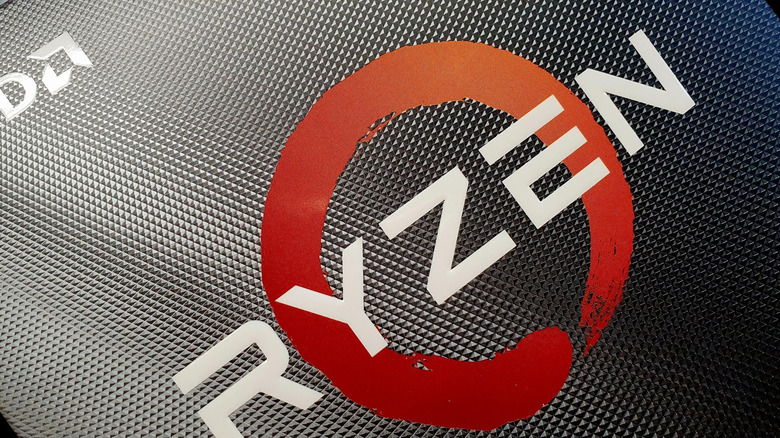5 Cheap AMD And Intel Processors For Your Next Gaming PC Build
We may receive a commission on purchases made from links.
Gaming can be a fun hobby, but it isn't necessarily a cheap one, especially if you're a PC gamer. Between modern GPUs with terrible price-to-performance ratios and tariff-related price woes, it's hard to blame anyone for going down the console gaming route instead. However, we think that there's still a lot to be said about the advantages of PC gaming, including backward compatibility, versatility (a PC is a multi-purpose device), and, of course, those sweet, sweet Steam sales.
None of that matters, of course, if you just can't afford to build a gaming rig. But PC gaming may admittedly never be quite as accessible as console gaming price-wise, that doesn't mean you automatically have to spend a fortune on your components. There are always budget-friendly options available, and that's true of CPUs as well.
Now, to be clear, buying a $150-and-below CPU means you'll be making some sacrifices. You won't get as many cores or threads, for example, nor will you be on the cutting-edge of CPU tech — most of our picks are older products on legacy platforms. Some may also struggle with resolutions above 1080p, depending on the game. But a compromised gaming PC is better than no gaming PC, if you ask us. To that end, we used reputable third-party reviews for compelling cheap CPUs and put together this selection of five Intel and AMD products.
Intel Core i5-13400F
Intel may have moved away from its old Core "i" branding by introducing a new "Ultra" brand in 2023, but the CPUs from before the name change are still solid options for those seeking to minimize their outlay on a gaming rig. Out of all the products on this list, the Intel Core i3-13400F is possibly the most versatile, with 10 physical cores (six P-cores and four E-cores) plus 16 threads.
The i3-13400F, while not necessarily a productivity powerhouse, will also do a solid job in non-gaming scenarios like photo and video editing, and even some AI workloads. Having a PC capable of more than gaming is great, and this is probably the best option if you're limited to cheap CPUs. As far as gaming goes, the i5-13400F was a strong budget performer when it debuted, and its current pricing makes it an even more appealing option. PC Gamer found that the 13400F traded blows with AMD's Ryzen 5 7600X — which is still roughly $170 now — in most games. Similarly, Tom's Hardware noted that it was only 7% slower than the 7600X and could still push triple-digit frame rates in most games — albeit when paired with an RTX 4090.
The AMD Ryzen 5 7600X is worth considering if you can afford it, but if you're trying to economize on your CPU to afford better components elsewhere, this is a great choice. You could also go for the slightly newer Intel Core i5-14400F, although you won't get a noticeable performance boost.
AMD Ryzen 5 5600
Given that even the cheapest of AMD's readily available AM5 chips still sells for more than $150, what's a budget PC gamer to do if they want to go with Team Red? There's always the trusty AM4 socket, which supported a range of great AMD CPUs. The AMD Ryzen 5 5600 perhaps isn't one of those, but it's a strong choice for the roughly $120 it costs these days.
This CPU gives up a few cores compared to the Intel Core i5-13400F (six cores and 12 threads vs. 10 cores and 16 threads), so it won't be as useful for multi-threaded workloads. It's also not quite as beefy a gaming CPU, either. Looking at Tom's Hardware's test of the i5-13400F, AMD's next-closest CPU, the Ryzen 5 5600X, trails Intel's part by about 13% on average with DDR4 3600 MT/s RAM. AMD's 5600X still turned in playable framerates in the site's testing, though. The Ryzen 5 5600 is only very slightly slower than the 5600X in real-world tests, so you'll likely get similar, if not identical performance.
AMD's budget hexa-core holds up quite well in modern games, too, as Hardware Unboxed discovered. It isn't too far behind AMD's Zen 5 parts in games like "Starfield" or "The Last of Us Part I," but trails in more intensive ray-traced scenarios. Hardware Unboxed also opined that the 5600 will hold back anything faster than an Nvidia RTX 4070, but you're probably not buying a high-end GPU if you're shopping at this end of the market anyway.
AMD Ryzen 5 8500G
The AMD Ryzen 5 8500G is a newer AMD CPU that only works with DDR5 RAM, which can be a bit pricier than DDR4. Add to that its $154 price, and you'd be forgiven for feeling like it's not quite as cheap a choice as the others. However, while an AMD APU will never replace a dedicated GPU, it'll do an okay enough job for light gaming that you could conceivably go without a GPU for a while, freeing up money for the DDR5 RAM and newer AM5 motherboard you'll need. So it's justifiable overall. And, given that AMD will support AM5 through to 2027, you'll also have more room to grow than with the other CPUs on this list.
As of mid-2025, AMD offers the Ryzen 5 8500G and the older AMD Ryzen 5 5700G at the $150 mark. The 5700G has more cores and threads (eight and 16 vs. six and 12), but the 8500G is the better overall choice, even with fewer CPU cores. In return, you get noticeably better gaming performance: TechPowerUp's testing showed the newer part having a roughly 20% lead over the 5700G at 720p and 1080p.
Now, this doesn't mean you'll be hitting blazing-fast frame rates. TechPowerUp tested the 8500G at minimum settings and 720p, and still only averaged around 40 fps in its test suite. This did include a healthy 45 fps in "Cyberpunk 2077" and a playable 62 fps in "Counter-Strike 2," though — still a lot better than an Intel iGPU.
Intel Core i3-12100F
Now we come to the ultra-budget end of the scale, targeting prospective those for whom even a $120 CPU feels like a stretch. The first of our two super-cheap CPUs is the Intel Core i3-12100F, a four-core, eight-thread part that's regularly available for well under $100. Despite the limited cores, the i3-12100F does an okay job in multi-threaded workloads for the price. It also has solid single-core performance, so you should be fine for Adobe Photoshop, for example.
Both Tom's Hardware and TechSpot had good things to say about the i3-12100F back in 2022. The former said that the CPU "offers exceptional performance in gaming," while the latter saw Intel's budget chip push a 162-fps average in its 10-game test suite, albeit paired with an AMD Radeon RX 6900 XT. Sure, you probably won't pair an i3-12100F with a GPU that powerful, but it goes to show that the i3-12100F had solid gaming chops when it debuted. It also supports PCIe 4.0, so you won't have any bandwidth-related GPU performance issues.
Intel continued to update the i3 for the 13th and 14th generation of CPUs, but its successors didn't offer significantly better performance. Thus, we recommend the 12th-gen part here. Sure, you could spend an extra $10 or so on the Intel Core i3-14100F and get a very slightly faster CPU, but we'd stick with the i3-12100F and put that difference toward a fun sub-$20 USB gadget from Amazon instead.
AMD Ryzen 5 5500
Last but not least is AMD's entry in the ultra-budget gaming CPU stakes, the AMD Ryzen 5 5500. The 5500 came out alongside the Ryzen 5600 and was generally considered the lesser of the two by reviewers, partly for somewhat uncompetitive pricing compared to Intel's Alder Lake CPUs. Times have changed, though, and what was once a $160 CPU can now be had for $70 to $85, which helps make up for its shortcomings.
Like the Ryzen 5 5600, the Ryzen 5 5500 is a six-core, 12-thread part, just with cores from the Ryzen 5 5600G APU. This means that the Ryzen 5500 is noticeably slower than the 5600 even in a relatively undemanding game like "F1 2020," as PCMag's contemporary review shows. Tom's Hardware's tests returned similar results, with the Ryzen 5500 about 16% slower than its bigger brother over its testing suite without overclocking engaged. But the huge price cut makes the performance drop much more palatable for those shopping on a very tight budget, especially if you're sticking to 1080p gaming.
However, one compromise to consider is that the Ryzen 5 5500 only supports PCIe 3.0. Some GPUs, including AMD's much-maligned Radeon RX 6400 and Nvidia's new RTX 5060 Ti, have cut-down PCIe interfaces that limit bandwidth when used in a PCIe 3.0 slot. The RX 6400 is apparently an especially bad pairing here, while Nvidia's offering fares better, only taking a slight performance hit. It's not necessarily a dealbreaker — you'll just need to watch your GPU pairing.
Methodology
The first, and most important, part of assembling this list of CPUs was to set a price ceiling. Bearing in mind that one person's budget-bursting splurge is another person's comfortable lower-end purchase, we decided on a $150 cutoff, sticking firmly to that ceiling unless there were justifiable reasons to go slightly over. If you've read through our list, you'll know that there was one instance, but we're confident that going very slightly over $150 cap was entirely reasonable for that particular CPU.
After setting our limit, we then scoured third-party CPU reviews to establish a list of products that were either competitive at launch or which have now dropped in price enough that their initial failings are now far less of an issue. Given the varied release dates of CPUs and our budget constraints, direct comparisons were invariably tough; however, we extrapolated wherever possible to find the strongest possible lineup of processors available for $150 or less as of June 2025 from both Intel and AMD. We also made a conscious choice to include an APU to offer an alternative to buyers who may not need a dedicated GPU.
